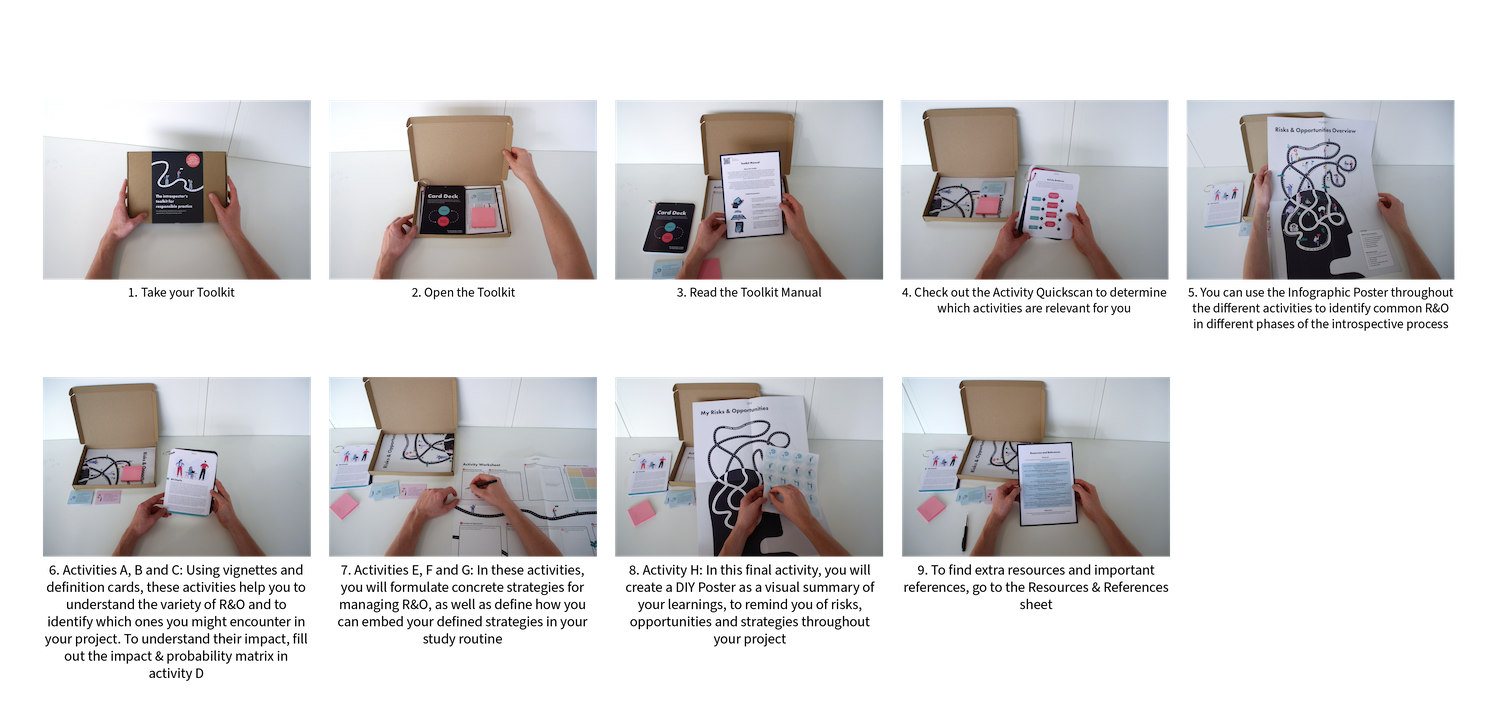By Katelijn van Kooten
Introduction
Introspective methods are gaining momentum within the design field. Introspective methods hold that the researcher has a dual role, they are both researcher and researched, i.e. “researcher-introspector”(Gould, 1995; Woodside, 2004). They add a subjective dimension to the existing body of research, enriching our understanding of complex phenomena, human experiences, and psychological processes. The personal, revealing nature of introspection is what gives this method its unique opportunities, however, its risks too. Introspection can pose a variety of risks to the researcher themselves, as well as to those they refer to in their research, which can have a negative impact on their wellbeing.
The rise of introspection in design must be met with a corresponding commitment to responsible practice. It is important that researchers who want to do introspection have the means to deliberately consider and balance risks and opportunities, as well as the impact on themselves and those they represent in their study. To get there, the gap must be addressed between existing procedural ethics and the realities of introspective practice. Therefore, this Master thesis researches how introspective researchers can be supported to assess the ethical risks and opportunities of their introspective research and manage these throughout their study.

Figure 1. Illustrated infographic poster showing common risk dimensions and opportunity categories for the act of introspection vs. sharing introspective accounts.
Project Approach
Through literature and empirical research, five risk dimensions and six opportunity categories were identified, providing guiding lenses through which researchers can assess and navigate risks and opportunities (R&O). Through a focus group, interviews, and an introspective self study, three key problems emerged: 1) researchers have little awareness and understanding of potential R&O, 2) it is difficult to look ahead and identify R&O in their own study, and 3) they have little know-how on how to deal with risks (and opportunities). This especially goes for researchers who are new to using introspection as a method. After ideating and prototyping different concepts, a toolkit prototype was developed and evaluated with end-users.
“Using this toolkit would make me more cautious and therefore more careful with how I conduct my study and what I publish.” – Evaluation Participant #3
Evaluation showed that the toolkit provides valuable guidance for researcher practitioners to minimize the risks of their study, while maximizing the opportunities. Based on the evaluation feedback, a final design update was made, resulting in the final design: The Introspector’s Toolkit for Responsible Practice.

Figure 2. The Introspector’s Toolkit for Responsible Practice
Toolkit Design
The aim of the Toolkit is to help researchers understand, identify and manage the risks and opportunities of their introspective research. The toolkit consists of different components, including the following:
- Cards with vignettes: Each vignette presents a combination of different risks and opportunities. The vignettes are situated in a design context. The goal is to help researchers understand how risks and opportunities can manifest themselves within the act of introspection, as well as when sharing an introspective account.
- Cards with activities and an activity worksheet: Through eight activities, researchers are supported to understand, identify and manage the risks and opportunities in their own project context. The activity results can be processed on the activity worksheet.
- Infographic Poster + DIY Poster: An infographic poster was created to visualize common risks and opportunities within different parts of the introspective process. This can help researchers think about the risks and opportunities they can expect in these phases in their own study. The back side of the poster presents a template for researchers to visualize their own risks, opportunities, impact and strategies as a way of making a visual summary.
For further development of the toolkit, ten recommendations are proposed, including improving its collaborative use, expanding the content, improving form and interaction, and more elaborate testing.

Figure 3. How to use the Toolkit
Toolkit Explainer Video
Download
Download the graduation report in the TU Delft repository
Download the digital version of the toolkit for your self-consent ritual
References
Gould, S. J. (1995). Researcher introspection as a method in consumer research: Applications, issues, and implications. The Journal of Consumer Research, 21(4), 719-722. https://doi.org/10.1086/209430
Woodside, A. G. (2004). Advancing from subjective to confirmatory personal introspection in Consumer Research. Psychology and Marketing, 21(12), 987-1010. https://doi.org/10.1002/mar.20034



